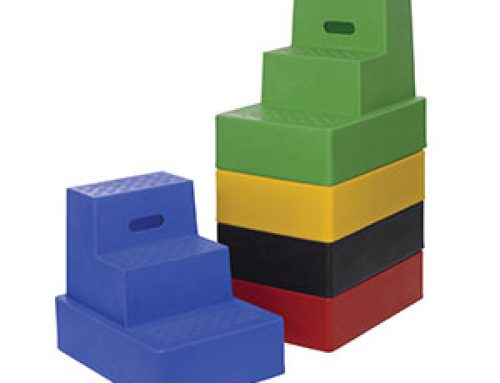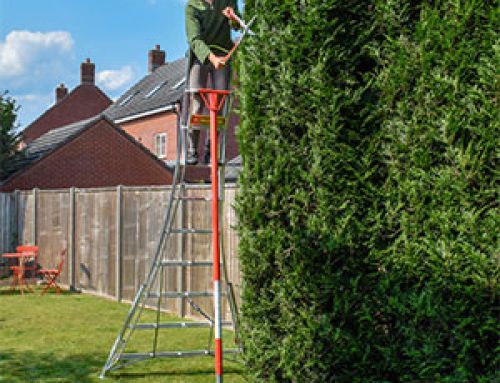 It’s a dead cert that The Great Escape will be on television over Christmas, but for a film (based on a true story) with escaping at the centre of the plot, there is a noticeable lack of ladders. In fact, the only time we see a ladder in the whole film is towards the end, where the exit shaft (the one which fell twenty feet short of the tree line that was supposed to provide coverage for the men escaping from ‘Harry’) contains a makeshift wooden ladder, probably constructed from bed boards and bits of table.
It’s a dead cert that The Great Escape will be on television over Christmas, but for a film (based on a true story) with escaping at the centre of the plot, there is a noticeable lack of ladders. In fact, the only time we see a ladder in the whole film is towards the end, where the exit shaft (the one which fell twenty feet short of the tree line that was supposed to provide coverage for the men escaping from ‘Harry’) contains a makeshift wooden ladder, probably constructed from bed boards and bits of table.
Escape ladders are not really intended for escaping from incarceration or illegal activities, but it is fun to think they might be. In fact, it is more likely to be a rope ladder than a solid ladder that is used in an escape attempt anyway, as they are usually easier to construct and can be packed down much smaller.
The main exception to this rule is the fire escape. Fire escapes are usually permanent structures on the outside of buildings, sometimes looking like a cat ladder (which is a metal ladder that has a cage enclosure around the highest part of the ladder) and most commonly thought of as the style seen on American tenement blocks. These fire escapes are more like metal staircases with landings between each stage. Only the final part of the escape route is a ladder in the strictest sense, one that drops down from the lowest landing when a person’s weight is put on it.
 If you don’t live in a building with a fire escape ladder built on (and realistically most people do not) then you can buy a metal ladder with deep hooks at the top that can be stored on the wall in a bedroom and hooked over the windowsill to provide an escape route. Of course, homes with extensions built underneath windows already have a makeshift escape route, but it’s a good idea to check your home for possible escape routes in case of fire, and purchase escape ladders for those rooms that do not have an easy exit plan.
If you don’t live in a building with a fire escape ladder built on (and realistically most people do not) then you can buy a metal ladder with deep hooks at the top that can be stored on the wall in a bedroom and hooked over the windowsill to provide an escape route. Of course, homes with extensions built underneath windows already have a makeshift escape route, but it’s a good idea to check your home for possible escape routes in case of fire, and purchase escape ladders for those rooms that do not have an easy exit plan.
There is an alternative model, which is smaller and more easily storable (and therefore could be kept in every first floor occupied room). The Pro User escape ladder is fifteen feet long, which is long enough to descend from a first floor window in an emergency. It has good, solid metal treads but the side rails are made from flexible strong plastic, so when it is stored away it folds down to a compact size. Strong metal hooks at the top attach over a windowsill, so when the hooks are positioned and fastened over the windowsill and against the wall below it, the ladder can be deployed easily and will not tangle. Each rung has a built in stand off that keeps the rung away from the wall or window below and also helps keep the ladder stable (because when you are escaping from a burning building quickly,  you want the ladder to stay as still as possible). The great thing about this ladder (apart from the easy storage) is that it can take up to seventy stone in weight, which is, generously, three people. This means that more than one person can be climbing down it at any one time. At £59.99 it might seem like a lot of money for a ladder you might never use, but safety and the value of life is something you cannot put a price on. For parents of young people moving away from home for the first time this would make a dull, but very useful housewarming gift, and give a little peace of mind for worried parents. You could always give the ladder as a second present along with a bottle of champagne (with strict instructions not to use one after drinking the other!).
you want the ladder to stay as still as possible). The great thing about this ladder (apart from the easy storage) is that it can take up to seventy stone in weight, which is, generously, three people. This means that more than one person can be climbing down it at any one time. At £59.99 it might seem like a lot of money for a ladder you might never use, but safety and the value of life is something you cannot put a price on. For parents of young people moving away from home for the first time this would make a dull, but very useful housewarming gift, and give a little peace of mind for worried parents. You could always give the ladder as a second present along with a bottle of champagne (with strict instructions not to use one after drinking the other!).
Similar types of escape ladder are available, following the same design, but for those living in apartment blocks where the escape route is over a balcony rather than out of window, in which case the fixing needs to be narrower in order to fit over a balcony railing rather than a windowsill.
Other types of fire escape ladder (that are not permanently fixed to the property) include designs that can be hooked onto anchor bolts installed in the wall of the property. This is especially useful for homes where the windowsills are weak, rotten or very deep and therefore won’t take the type of ladder that hooks over. These ladders are also good for attic escape ladders, as they can be used from roof windows and skylights, and have been specially designed not to get caught in guttering or other obstacles on the building.
If a permanently fixed fire escape ladder is the best solution for you (perhaps as a property manager, or for student halls of residence) then there are models that sit discreetly underneath a windowsill on the outside of a building, that can then be released by a person inside the window, or that fix to the wall next to a window fold into a drainpipe sized tube. These ladders have a pin at the top (to stop them being used from the ground as an access route for burglars) and slide out to become a strong ladder. These are suitable for higher windows than first floor, and so are ideal in student halls and low rise apartment blocks.

The winter season shows an increased risk of house fires associated with the use of portable heaters and electric radiators. Always check these appliances before use and never leave them unattended, especially around children as there is a risk of them getting 






Leave A Comment
You must be logged in to post a comment.